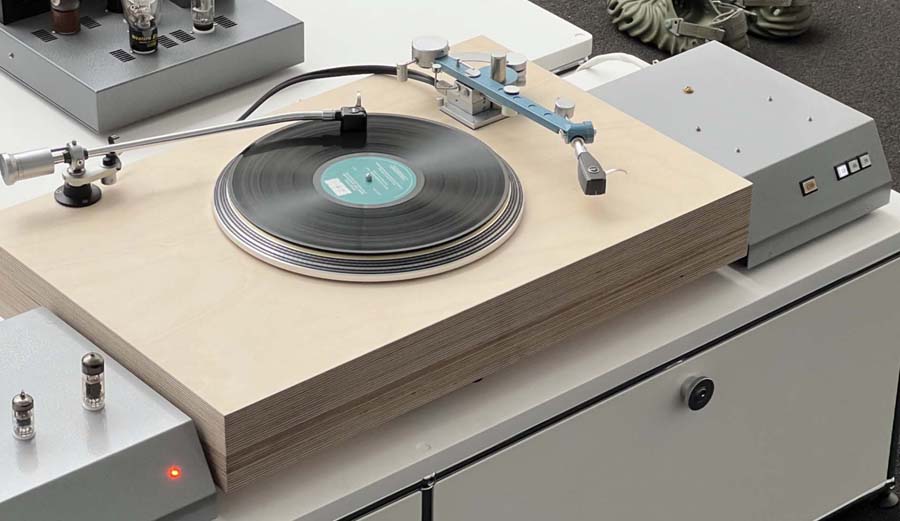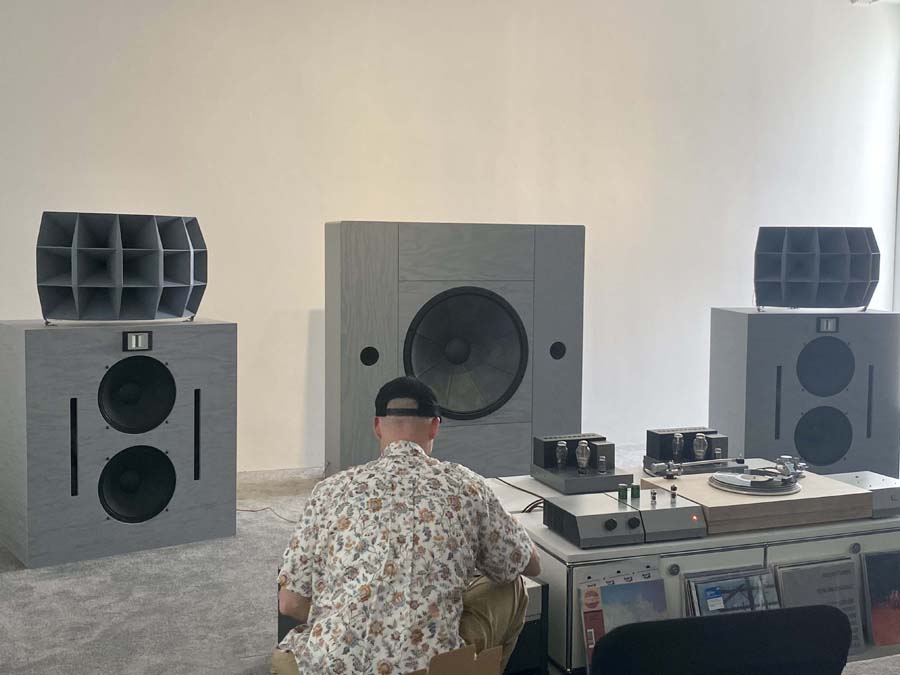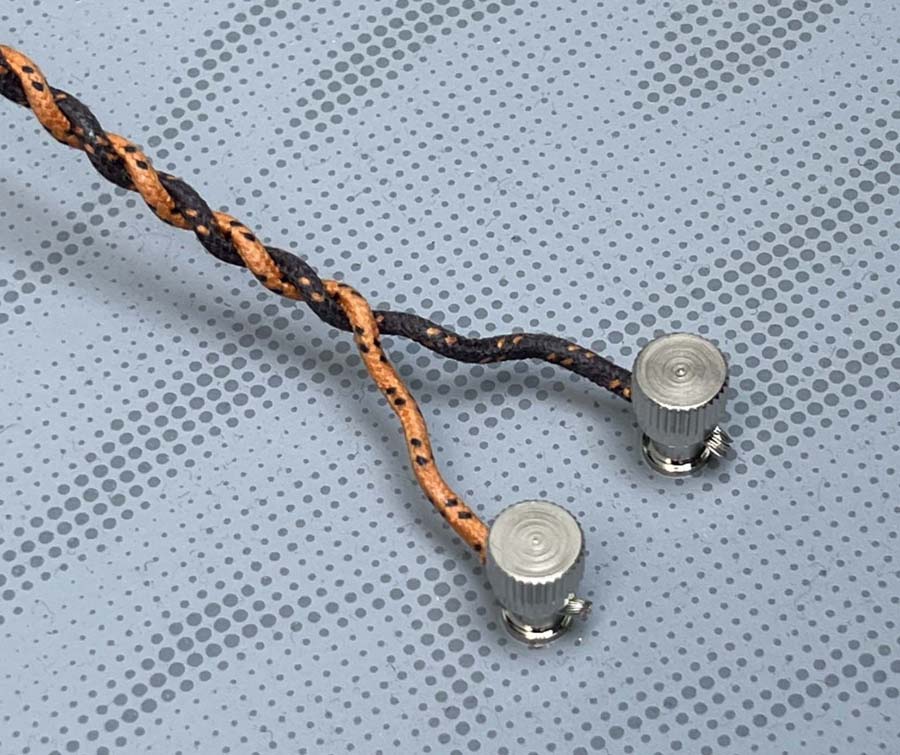HiFi Listening Room Dreams No. 1
The OJAS Sound System – The Lisson Gallery, 27 Bell Street, London NW1 5BY by guest writer Haden Boardman.
It has been a while… Old London town. Covid-19 lost everybody a couple of years of their lives, and I have yet to return to my bi-monthly sojourns to the capital city to soak up some art, some design, or some music. Dial in the fact the train operator for the North West main railway line rammed the cost of the London return journey up to criminally insane levels; then on top of that, me, managing to catch the dam long covid virus, which continues to hang on to me like a ghoul, and you can see why I have stayed routed in the great North West, lacking any motivation for a trip down…
DEVON TURNBULL
I cannot remember where I first came across Devon Turnbull. It must have been one of his posts on Instagram, he likes showing retro articles from MJ magazine from Japan, reposting classic Japanese listening room experiences on there. MJ has been around for nearly 100 years and is the Japanese magazine for the home audio system constructor. Both Devon and I were in Japan at a similar time in the late 1990s, and it would appear we both took quite a similar interest in the goings on over there and quite a lot of inspiration.
Through the original 1990s Western underground magazine; Sound Practices, Devon learned all about his native USA boutique-audio culture, and he fully embraced it. Over the years he has reached out and tried virtually every concept. He recalls his first experience of a full ALTEC style sound system in France, and realising this was it, what he had been looking for. It was his connection with fashion design that led him to Japan, and it is clear this cross-arts culture is vitally important to him and has helped him define and fashion his OJAS sound system. He has installed his bespoke equipment in all manner of places, and not necessarily the normal kinds of places you might expect; high-end clothes stores, bars, workplaces…
OJAS SOUND SYSTEM
His works and installations have not gone unnoticed in the art world, and Devon was awarded a show for the OJAS sound system in the Lisson Contemporary Art Gallery, Chelsea, New York.
This brings us to now, and, finally, my inspiration to travel to London. I was delighted to hear the news that the Lisson Gallery was to transfer the installation from New York, into one of their own London gallery spaces. Having communicated with Devon over the last few years, and been greatly impressed by his outlook, I decided I had no choice but to visit. So despite a rammed timetable of work, all the above preamble, finding a day on which Devon would be present, a day in which I could buy train tickets for less than a king’s ransom, I finally managed to break my abstinence and get down to London.
On arriving at the gallery at Bell Street, you are buzzed in through a large, fairly anonymous-looking grey vault-like door. A corridor takes you down to the centre of the gallery, and within it, Devon has two listening rooms, one showing his main HiFi Listening Room Dream No.1; and the second with some of his smaller audio works, plus a new super high-end TAD-based speaker system. The main room has been well treated acoustically, and was set to play as I entered; post what had seemed a rather extended train journey, I had finally arrived in the OJAS listening room, reasonably intact.
A Studer A810 open reel recorder was spinning away at a leisurely 7.5 ips, playing a fairly relaxed ‘OJAS’ live recording of an ambient and very chilled performance, I totally forgot to ask what it was, but it was utterly perfect to unwind me, after my journey. I took a listening position central and to the very rear of the room. The recording was of course unknown to me, but instantly displayed the fluidity, presence, and the unique effortless sound of an exceptional sound system. It was an easy move for me just to chill out, zone out, relax, close my eyes and meditate on the music for a while.
The system has a huge visual presence, but has what I suspect to be a deliberately utilitarian and plain appearance; why would you want your senses to be distracted from the music? Surely that is what this is all about? As the afternoon progressed there were more unknown tapes and plenty of vinyl. And what’s more, music material I knew really well. The turntable itself is based around a new state-of-the-art Direct Drive Technics SL1200G deck, stripped of its original plinth, electronics, and arm, and with the motor system mounted on a Kaneta type plinth via a 6mm thick slab of bronze. (If anyone knows Martin Bastin’s Maxplank Garrard plinth, the wood part of the Kaneta plinth has a similar architecture, but Kaneta suggests building it up from strips of hardwood instead of plywood.) It was completed with a newly developed separate power supply.
The arm in use was the classic articulated Dynavector ‘505 and a cartridge fitted from Ortofon, one of my favourites, the SPU. Not much was said about the details of phonostage, other than it is built as a collaboration with Steve Berger of Aprilsound, and currently uses ALTEC microphone transformers for moving coil setup, although these can be swapped about quite easily for other types.
The line stage pre-amplifier is in fact a passive transformer-based design, using parts sourced from Dave Single of Intact Audio.
The monobloc Class A 300B triode power amplifiers are to a fairly classic and well know 30-year-old Sound Practices design, from no less an amplifier artist and architect than Herb Reichert; the ‘flesh and blood 300B’, with just some subtle minor component tuning by Devon.
The speaker array certainly has a huge room presence. The main speakers are GPA 416 bass units, two per side in bass-reflex Onken type enclosures, with a classic OJAS version of the 1505 ALTEC horn, and matching OJAS/GPA 288C pressure unit. From my own experience, I know these classic Voice Of The Theatre components can be a little stifled at frequency extremes, which is where the extra system components in the OJAS system come in: The mighty Fostex FW800HS, a thirty-one-and-a-half inch infra bass sub-woofer. In the cabinet, this monster sub-bass unit can be tuned down to an almighty 16 Hz, pipe organ enthusiasts and synthheads take note. I am presuming this was running actively off its own amplifier and crossover. This large unit really provides real full stops to the music, giving a gripping underpinning and power to the overall sound, without for one moment drawing any attention to itself.
At the opposite end of the musical spectrum, mid-frequency horns exhibit a gentle roll off of the treble frequencies, becoming more faded past the 12KHz. To counteract this, a pair of Pioneer pure beryllium ribbon tweeter, the PT-R9, extend the range of the speaker ensemble up to 120KHz. The crossover for the ‘main’ speakers is based around the use of an auto transformer, a special transformer that has lots of ‘taps’ allowing the adjustment of HF horn’s level, and is much less wasteful and intrusive than a conventional L pad attenuator. There is a good 10 dB plus difference between the bass cabinets and horn and when questioned on crossover alternatives Devon made it quite clear he had tried pretty much everything, and believed this design, using a transformer made by Werner Jagusch in Germany, and Russian paper in oil capacitors, to be simply the best crossover design.
He is also quite clear on his cable choices. Having journeyed through silver, and several exotic types, his own manufactured speaker cable is a simple copper 16 AWG twisted pair, finished in a traditional vintage style jacket. Described as a smooth-sounding cable, and not producing any bright edge, as is often the case with a lot of silver cable designs.
After a long listen to the ambient recordings, more familiar material was placed on the record deck’s platter. Jarvis Cocker & Chilly Gonzales ‘Room 29’. If you don’t know this recording (why not?) it is a fairly stripped-down affair, with some quirky and amusing additions along the album’s tracks. There is utterly nowhere to hide with this recording. Any system colorations will stand out horribly. During my initial listening, I was truly impressed with the utterly effortless smooth interconnected sound, the dynamic contrasts within the recording, and the system clearly defining the roles of Jarvis and Chilly within it. Jarvis is very close mic’d, which can result in a heavy bass vocal presentation in the bass, this is easily ‘colored’ further on a poor system. My minor gripes did concern a slight mild thickening in the upper bass, a kind of very mild opacity, an extra warmth to Jarvis’s voice, but without boom, and an equally slight ‘splash’ from the ribbon tweeter. The latter two came down to my listening position. I had relaxed a little too close to the rear acoustically treated wall and the opacity was due to my head being in too close a proximity to it. Moving only a small amount away removed this sense opacity in the bass, and cleared it up somewhat. It is a long time since I ‘played’ with these reference Pioneer ribbons, and I had utterly forgotten just how damn directional they can be, even in quite a large space. Lowering my head around 120mm utterly transformed the higher frequencies. The ‘splash’ disappeared! I presume I had been listening to a refracted sound from the face plate of the tweeter, and once my position had been corrected, the entire upper register just opened up, seemingly to the sky.
THE LISSON GALLERY
After around four comfortable hours of listening, those present in the room were treated to an analogue master copies mix tape copied from some classic, iconic jazz album masters, including tracks from Miles Davis’s defining work; ‘Kind of Blue’. Now I own around five different vinyl copies of this classic, plus CD, SACD, High-Res files, books, theories etc. It is the most listened-to album in my collection, my most-known album, my most special album. I know it intimately well. The first thing to strike me about the OJAS sound system experience is that I have never heard such a clear definition to Coltrane’s saxophone as I heard on this, it just cut into the room, as if Coltrane was hiding behind a drape somewhere in the room. Of course, having worked with Tim de Paravicini very closely for 30 years had provided me with plenty of master tape experiences, but not to take away anything from the OJAS system, the way it reproduced these tracks was with absolute authority, utter fluidity, and in a none-forced and relaxed way. Background noise was near silent with vinyl replay, minimal tape noise, and not one undue hum, hiss, or fart from the system itself. All systems have some sonic signature, but here the intrusion was utterly minimal. There was no pyrotechnics, no OTT show-stopping nonsense, or exaggerated frequencies – the music was simply reproduced with a sense of truth and accuracy.
It is hard in just under 5 hours of listening to fully appreciate, let alone critically describe the OJAS system. Its creator, Devon Turnbull, has combed the audio landscape since his teenage years (sounds familiar) and has put together his take on a perfect audio system. He plays this system for free at the gallery, for all to enjoy. He is utterly open on what and where and how it all came to be, and freely gives details of it in its entirety. He, himself, is honest, open, and very approachable. Exactly like his sound system.
Devon Turnbull, HiFi Listening Room Dream no.1 is on at the Lisson Gallery till the third week of August 2023. If you can, do not miss your chance to experience a true reference in sound systems.
Haden Boardman

















































































































































































